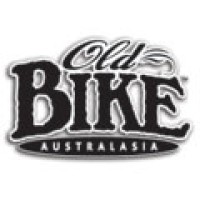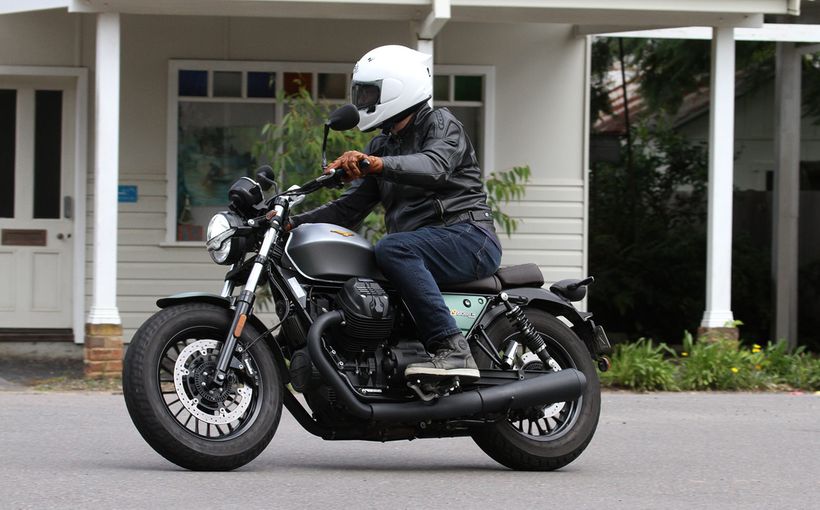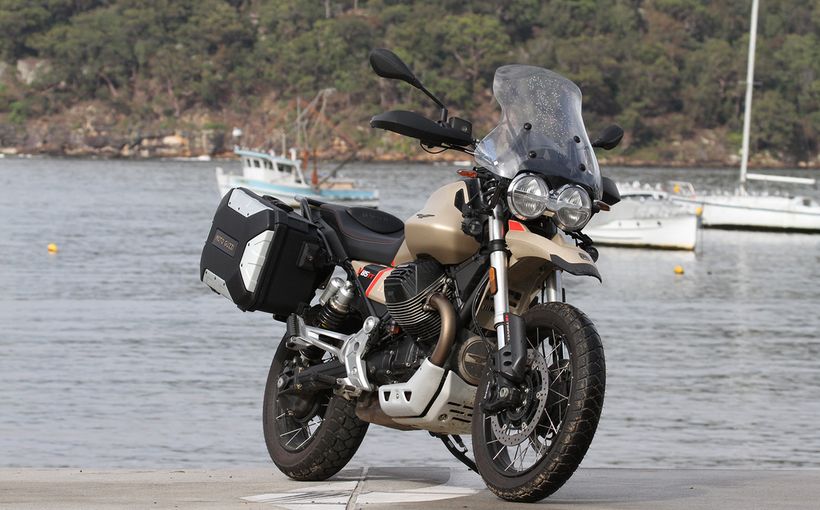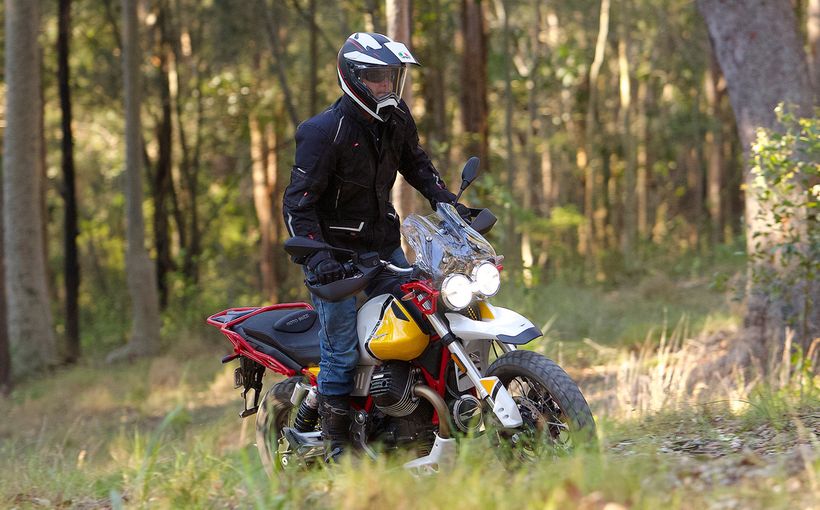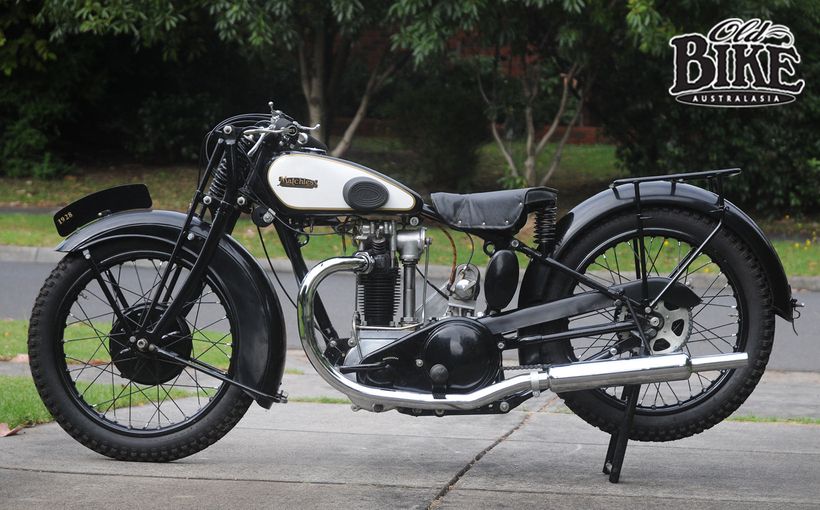Old Bike Australasia: Birds of a feather - 1953 Moto Guzzi Airone 250

Moto Guzzi had a thing about birds. Their famous motif that adorns virtually every petrol tank features the eagle emblem of the Italian Air Force – a throwback to the flying skills of Carlo Guzzi, Giovanni Ravelli and Giorgio Parodi. At various stages since the Moto Guzzi company was formed (initially as the Società Anonima Moto Guzzi in March, 1921), models acquired names derived from feathered flock, most notably the lusty Falcone (Falcon) 500cc single that played an enduring role in the company’s history. Others included the racing 250cc Albatross (1939-1948), Egretta (1939-1940, Egret or white heron), Astore (1949 – 1953, Goshawk), Galletto (1950 – 1966, Cockerell), Cardellino (1954 – 1965, Goldfinch), Lodola (1956 – 1966, Lark), and the subject of our story here, the 250cc Airone (Heron), produced from 1939 to 1957).
From the very first production Moto Guzzi, the 500cc Normale of 1921, the distinctive silhouette was established – Carlo Guzzi’s horizontal single cylinder engine with narrow crankcases and outside flywheel. What became the Airone actually began as the P 175 – visually very similar to the 500s but in fact bristling with new features, and this evolved to the P250, which first appeared around 1936 and quickly became available as three separate models.
In late 1939, the engine was redesigned with the bore size increased by 2mm to 70mm to a full 247cc, and a four-speed, foot operated gearbox. At this point the bird-lovers stepped in, and the new machine became the Airone, or Heron. The 247cc cast iron engine, still with exposed hairpins valve springs, ran on 6.0:1 compression fed by a Dell’Orto SBF 22mm carburettor. Inside the engine, the conrod was now of the bolted-up type, with 25mm mainshafts running on two roller bearings.

Production restarted on the Airone in 1945, naturally in its pre-war specification. 875 were built that year, according for nearly 50% of the factory’s total output. But it took little time for mods to be implemented, and by 1947 (when 1,100 were made) the Airone appeared with Guzzi’s revolutionary telescopic forks – which in the parlance of the 1990s were ‘upside down’ with the sliding tubes connected to the front axle. The following year the engine gained an aluminium alloy barrel and cylinder head with the valve gear completely enclosed, and a Sport version was introduced alongside the standard model. This used a combination pressed steel and tubular frame, with alloy Borrani wheel rims, 200mm alloy-finned brakes, sportier handlebars and a fishtail silencer. Compression on the Sport rose to 7.0:1, breathing through a 25mm Dell’Orto SS carburettor. Valve springs were slightly thicker in diameter, With 13.5 hp on tap, top speed was quoted as 120 km/h.

By early 1951, Moto Guzzi had appointed agents in Adelaide and Melbourne and launched the assault with the latest versions of the Airone, which was now available in either Tourismo or Sport specifications. The Australian delivered Airones sported all-alloy engines and chrome petrol tanks with panels and cycle parts in maroon. At £297 plus sales tax, the Airone was rightly seen as a very expensive 250 (when a new 350cc MAC Velocette could be had for £219/10- including sales tax), and in the name of maximising performance and overall appeal, only the Sport version was imported.
Back in Europe, the Airone received a makeover for 1952 with the chrome tank replaced by a larger capacity and much more round styled, finished in traditional Italian red with black panels at the knee area, and gold pin striping. The Sport now further varied from the Tourismo in having an optional package of the footrests and the rocking pedal gear change set slightly to the rear, and the rear brake pedal changed from the curious bell-cranked style hinged from the front, to a more conventional pedal that pivoted from the kick starter shaft. Moto Guzzi seemed to adapt certain parts according to availability, and the Airone magneto alternated in various years from manual to automatic advance/retard.

But time was running out for the Airone. There were sportier, faster and less antiquated looking 250s now on the market from a wide variety of manufacturers, but the real killer was the price. By 1956, the final model year (although the Airone Sport continued to be made into 1957 and a handful of Turismos in 1958), the price of the Tourismo had rocketed to 349,000 lire and the Sport to 364,000 lire.
The rampant inflation, the influx of cheap cars (notably the Fiat 500 in the home market), repressive legislation and insurance costs, even forced Moto Guzzi to abandon Grand Prix racing at the end of 1957 – a field where its svelte 35occ singles were well-nigh unbeatable on which Australia’s Keith Campbell became Moto Guzzi’s last World Champion. The factory had expended vast amounts of capital on the complex V8 500cc racer (and built a 350cc version which was never raced), and perhaps if these resources had been diverted to modernising models such as the Airone, the factory’s fortunes may well have taken a different course.

With the demise of the Airone, Moto Guzzi’s entry in the lightweight stakes was the 175cc Lodola, an altogether different type of bird with a more conventional looking engine that sloped forward in the frame at about 45 degrees and used the now standard swinging arm rear suspension with spring/damper units. In fact, the Lodolo offered performance levels very similar to the Airone, in a far more modern looking and marketable package. After this (in 1960) came the Stornello, in 125cc and later 160cc form, but to the Airone goes the distinction of being the final 250cc motorcycle produced by Moto Guzzi.
Protect your Moto Guzzi. Call Shannons Insurance on 13 46 46 to get a quote today.



